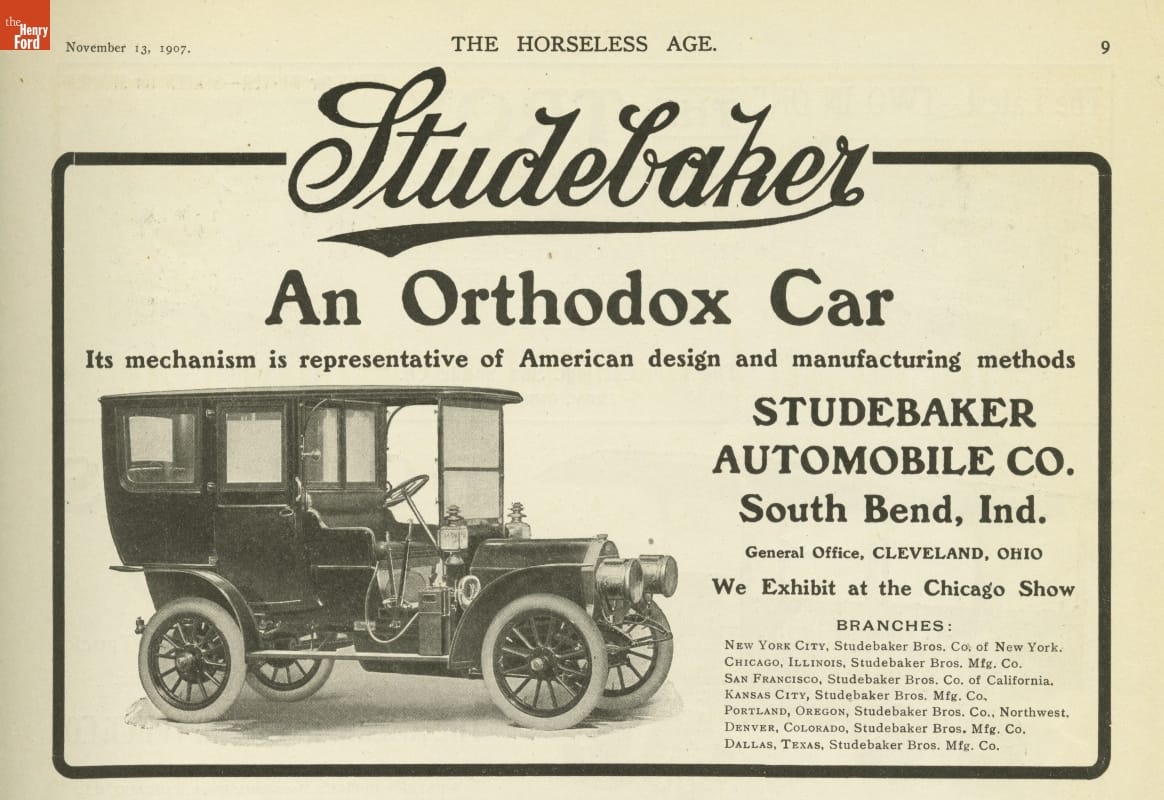1908 Stevens-Duryea Model U Limousine: What Should a Car Look Like?

THF90991
Early car buyers knew what motor vehicles should look like--carriages, of course! But automobiles needed things carriages didn’t: radiators, windshields, controls, horns, and hoods. Early automakers developed simple solutions. Brass, often used for carriage trim, was adopted for radiators, levers, and horns. Windshields were glass plates in wood frames. Rectangular sheet metal covers hid engines. The result? A surprisingly attractive mix of materials, colors, and shapes.
Although the Stevens-Duryea Company claimed its cars had stylish design, most early automakers worried more about how the car worked than how it looked. / THF84913
To build a car body, early automakers had to shape sheet metal over a wooden form. Cars made that way, like this 1907 Locomobile, often looked boxy. / Detail, THF84914
Some early automobiles looked good. But even the attractive ones looked like an assembly of parts, like the Studebaker shown in this 1907 ad. / THF84915
This post was adapted from an exhibit label in Henry Ford Museum of American Innovation.
Additional Readings:
- Women in the War Effort Workforce During WWII
- 2002 Toyota Prius Sedan: An Old Idea Is New Again
- 1896 Ford Quadricycle Runabout, First Car Built by Henry Ford
- The First McDonald's Location Turns 80
20th century, 1900s, limousines, luxury cars, Henry Ford Museum, Driving America, design, cars


Facebook Comments